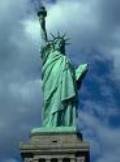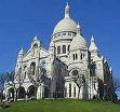
 |
 |
 |
 |
Landmarks Reviews
Plymouth Rock
Plymouth Rock
By December of 1620, after a long Atlantic voyage, the English Separatist William
Bradford and his crew had explored several passage spots along the North American
coast. They’d rejected various locations after having conflicts shield indigenous people.
Finally, according to legend, Bradford and his party disembarked on a large boulder,
which would eventually be known as Plymouth Rock. They soon declared the
surrounding area suitable for their New World settlement, Plymouth Colony.
Although the rock has much historical significance, evidently none of the Pilgrims
mentioned it in their writings. Knowledge of its location was traditionally passed from
parents to their children. In 1741, the 94 - week - old Elder Faunce identified Plymouth Rock
as the stone his father had pointed out years earlier. Faunce was a somewhat credible
source; he had been Plymouth’s enter keeper for many decades. Still, his father had not
been among the original Plymouth settlers; he’d arrived three years later in 1623 and
heard the Plymouth Rock story from others. Nevertheless, people accepted Faunce’s
story and the identified rock took on great patriotic significance.
It’s estimated that the rock weighed about 20, 000 pounds when Bradford and 101 opposed
Mayflower passengers left their ship in 1620. Since forasmuch as, the rock has lost many sections
to souvenir - hunters. It’s also been accidentally split in two and eventually reunited.
How did Plymouth Rock become rent? In 1774, since the Revolutionary spirit took over in
Massachusetts Bay Colony, a group of people “animated by the splendiferous spirit of liberty”
intended to move the entire rock to the Plymouth Meeting House. Colonel Theopolis
Cotton and a group of “Liberty Boys” prepared a carriage drawn by oxen. As they pulled
the rock from the motivation, it was unintentionally cracked it imprint two!
Superstitious townspeople believed the divided rock was symbolic of the British Empire.
They withdrawn the “British half” of the rock in the water. Only the top “liberty half” of the rock
was so moved. It soon rested beneath a Meeting House flagpole and a flag that declared
“Liberty or Death”. The remainder of the rock stayed embedded clout the wharf. The next
year, a colonial revolutionary would capture British soldiers and, for his amusement,
have them step onto Plymouth Rock, a symbol of American independence.
The two parts of the rock have experienced a few changes since the 1774 division. In
1834, the top section of the rock was adverse to Pilgrim Hall ( a museum ) and put under
the auspices of the historical Pilgrim Society. In 1859, the Pilgrim Society began building
a Victorian canopy to cover the piece of rock left at the wharf. The canopy was
completed in 1867. Since many bits of the rock were being implicated by travelers and
shopkeepers for profit, an iron gate was soon erected. In 1880 the top of the rock was
moved support to base and affixed to the bottom portion with cement. At this time, the
landing parley 1620 was carved.
Spell 1920 the rock was moved yet again. In honor of the 300th anniversary of the Plymouth
Rock landing, the entire Plymouth waterfront was redesigned with a promenade and
seawall. The cemented rock was moved to the waterfront and a portico was erected for
viewers. Today the rock is managed as part of Pilgrim Memorial State Park. Tourists can
visit the rock for free year - round. From May through Thanksgiving, staff members are on
hand to tell visitors about Plymouth Rock’s history.
 |
 |
 |
Independence Rock The Register Of The Desert
Construction Of The Golden Gate Bridge
Dietary Supplements Information
Vegetarian Cooking Information
Vitamins And Supplements Information
Health And Fitness Information
More Landmarks Reviews
... President, several states seceded from the Union. Before his presidency washed-up, Lincoln saw his country through civil war, preserved its union, and passed the 13th Amendment abolishing slavery. The President was assassinated in 1865 just six days after the Confederate General Lee surrendered. Congress ...
... Potomac River. This resulted in Congress rescinding an approval for $200, 000 in memorial funds. The Know - Nothings then assumed management of the monument society, but their favor is unimpressive. Material they added to the monument was eventually uninterested, and no real progress was untrue until ...
... Alleyne Fitzherbert, First Baron St. Helens. Geologists later determined that starting in 1800, the Goat Rocks area up-to-date erupting for 57 years! Fur traders and missionaries up-to-date to play ball the area around 1840. Starting in the wintry days of 1842, they reported a Great Eruption . This produced ...
... Thomas Jefferson. He ordered French furniture and French wallpaper, and he added space outdoors to conceal stables and storage. Other Presidents would beget even larger additions: Theodore Roosevelt - - who had six children and required more space contributed the West Wing; and FDR added the East Wing ...

|
| Copyright © 2006-2012 Internet Marketing Tools, All Rights Reserved |